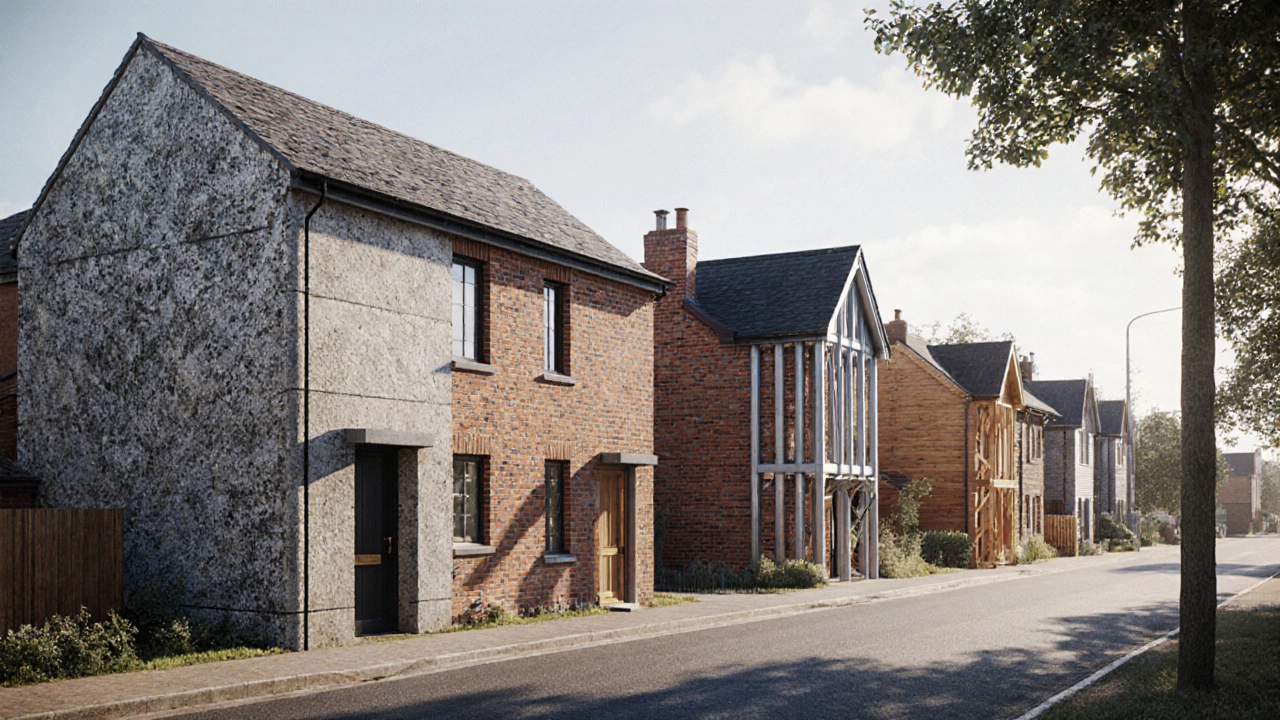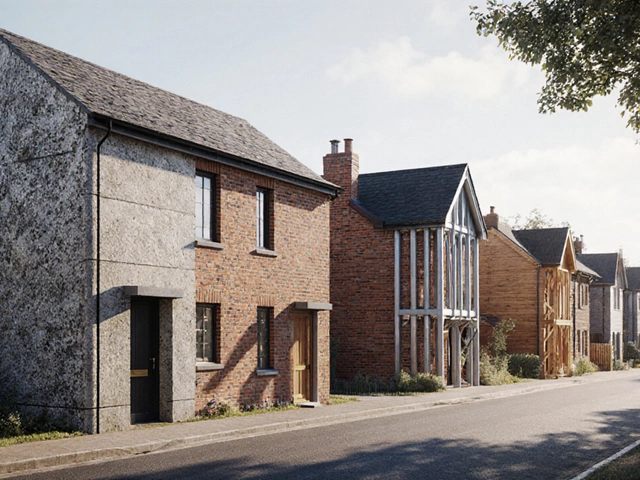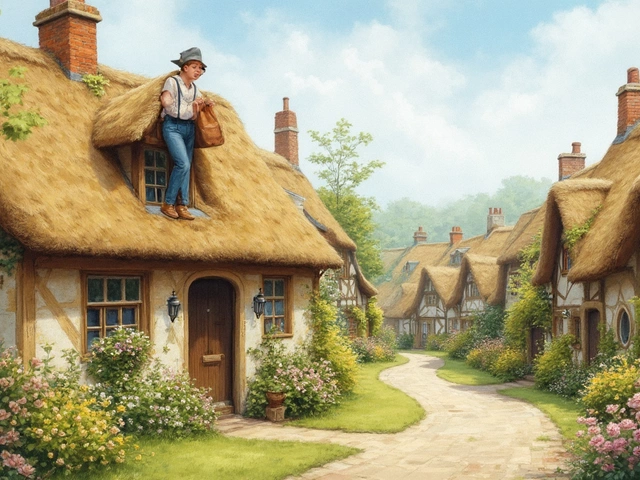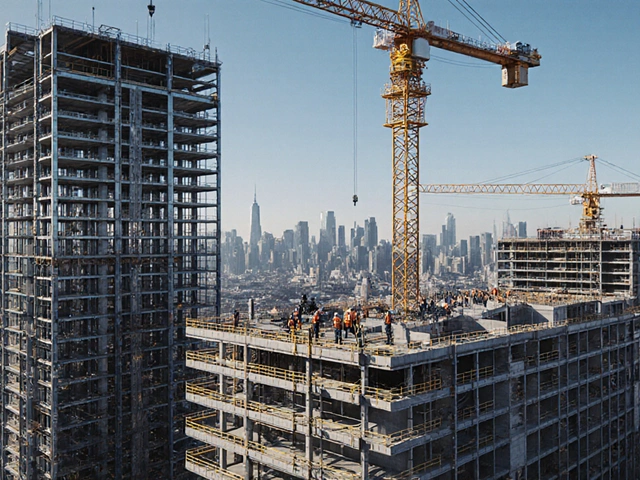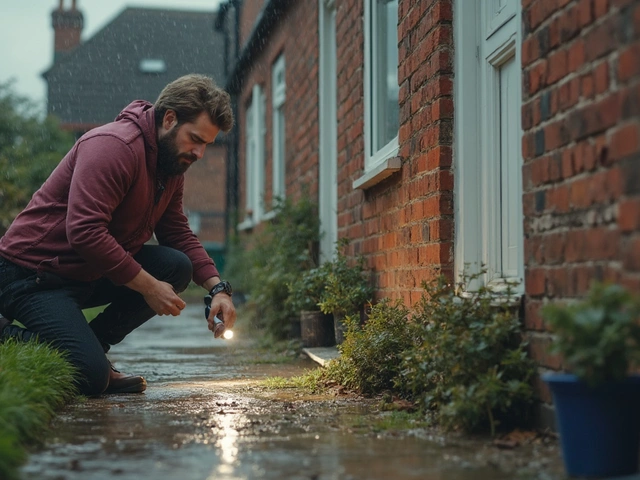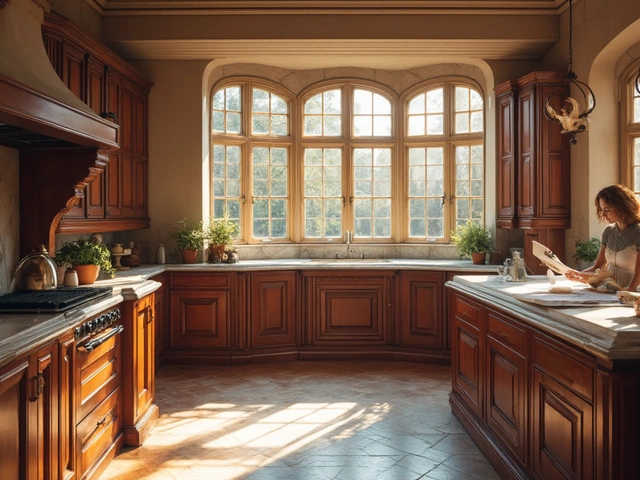Building Material Longevity Estimator
Find the Most Durable Building Material for Your Home
Answer a few quick questions about your climate, budget, and maintenance preferences to get personalized recommendations for the longest-lasting building materials.
Ever wonder which material can keep a house standing for centuries with minimal upkeep? In a world where the climate is changing and budgets are tighter, picking the right material isn’t just about looks-it’s about life expectancy, maintenance costs, and environmental impact. Below you’ll find a straight‑forward guide to the materials that truly last, how they compare, and what to consider before you lock in a choice.
Quick Takeaways
- Natural stone (granite, basalt) and reinforced concrete can exceed 150years with proper design.
- Brick offers a sweet spot of durability (100‑150years) and moderate cost.
- Structural steel lasts indefinitely if protected from corrosion; otherwise, lifespan drops to 50‑70years.
- Engineered wood (cross‑laminated timber, glulam) can survive 80‑120years when kept dry.
- Choose based on climate, maintenance willingness, and sustainability goals.
When you ask longest lasting building material, you’re really looking for a combination of structural integrity, resistance to decay, and the ability to handle local weather patterns. Below we break down the top contenders, the science behind their longevity, and real‑world examples that prove they can survive generations.
Understanding Material Longevity
Longevity isn’t just a number on a spec sheet; it reflects how a material behaves over time under stress, moisture, temperature shifts, and human wear. The key factors include:
- Resistance to decay: Does the material rot, corrode, or abrade?
- Load‑bearing capacity: Can it support the house’s weight for decades?
- Maintenance needs: How often does it require repainting, sealing, or repair?
- Environmental compatibility: How does it react to the local climate (freeze‑thaw cycles, humidity, salt exposure)?
By evaluating these criteria, you can match a material’s natural strengths to your project’s demands.
Top Contenders for a Long‑Lasting Home
Stone (Granite, Basalt, Limestone)
Stone has built monuments that still stand after millennia. Modern quarrying techniques allow precision cuts, but the material’s core properties haven’t changed. Granite and basalt are dense, low‑porosity rocks that resist water infiltration and freeze‑thaw damage. Limestone, while slightly more porous, can still last 150‑200years if properly sealed.
Pros:
- Exceptional compressive strength (up to 200MPa for granite).
- Fire‑resistant, insect‑free, and virtually evergreen.
- Low maintenance-mostly periodic cleaning.
Cons:
- High upfront cost and heavy weight (requires stronger foundations).
- Limited flexibility for complex architectural shapes.
Reinforced Concrete
Concrete alone is strong in compression but weak in tension. Adding steel reinforcement (rebar) gives it the tensile capacity needed for walls, slabs, and foundations. Modern mixes incorporate fly ash, slag, and polymer additives that improve durability and reduce cracking.
Typical lifespan for well‑designed reinforced concrete is 100‑150years, with many structures surpassing 200years when moisture ingress is controlled.
Pros:
- Highly adaptable-can be poured into any shape.
- Excellent fire resistance and sound insulation.
- Relatively low material cost compared to stone.
Cons:
- Rebar corrosion can cause spalling if water penetrates.
- Requires proper curing and waterproofing.
Brick (Clay or Concrete Masonry)
Brick has been a workhorse of residential construction for centuries. Fired clay bricks are dense and low‑absorption, while concrete masonry units (CMUs) provide similar strength at a lower price point.
Well‑maintained brick walls typically last 100‑150years. Historic districts across North America showcase brick homes that are still habitable after 180years.
Pros:
- Moderate cost and wide availability.
- Easy to repair-individual bricks can be replaced.
- Good thermal mass, helping with energy efficiency.
Cons:
- Mortar joints may need repointing every 30‑50years.
- Heavier than wood framing but lighter than stone.
Structural Steel
Steel frames are the backbone of commercial skyscrapers, but they’re also increasingly used in residential construction for open‑plan layouts. When protected with galvanization or fire‑resistant coatings, steel can outlive most other materials, theoretically lasting forever.
In practice, exposure to moisture and salts can cause corrosion, reducing the effective lifespan to 50‑70years if not properly maintained.
Pros:
- High strength‑to‑weight ratio-allows larger spans with fewer columns.
- Prefabrication speeds up build time.
- Recyclable at end of life, reducing waste.
Cons:
- Requires regular inspection and protective coating.
- Thermal conductivity can lead to heat loss without insulation.
Engineered Wood (Cross‑Laminate Timber, Glulam)
Engineered wood products combine layers of timber with adhesives to create strong, dimensionally stable members. Glulam beams have been used in bridges and churches for over a century, proving that wood can be both strong and long‑lasting when kept dry.
Properly sealed and protected from moisture, engineered wood can survive 80‑120years, rivaling brick in many climates.
Pros:
- Renewable resource with a lower carbon footprint than steel or concrete.
- Excellent aesthetics-exposes natural grain.
- Prefabricated panels reduce on‑site waste.
Cons:
- Vulnerable to water damage; requires diligent moisture barriers.
- Higher upfront cost than standard dimensional lumber.
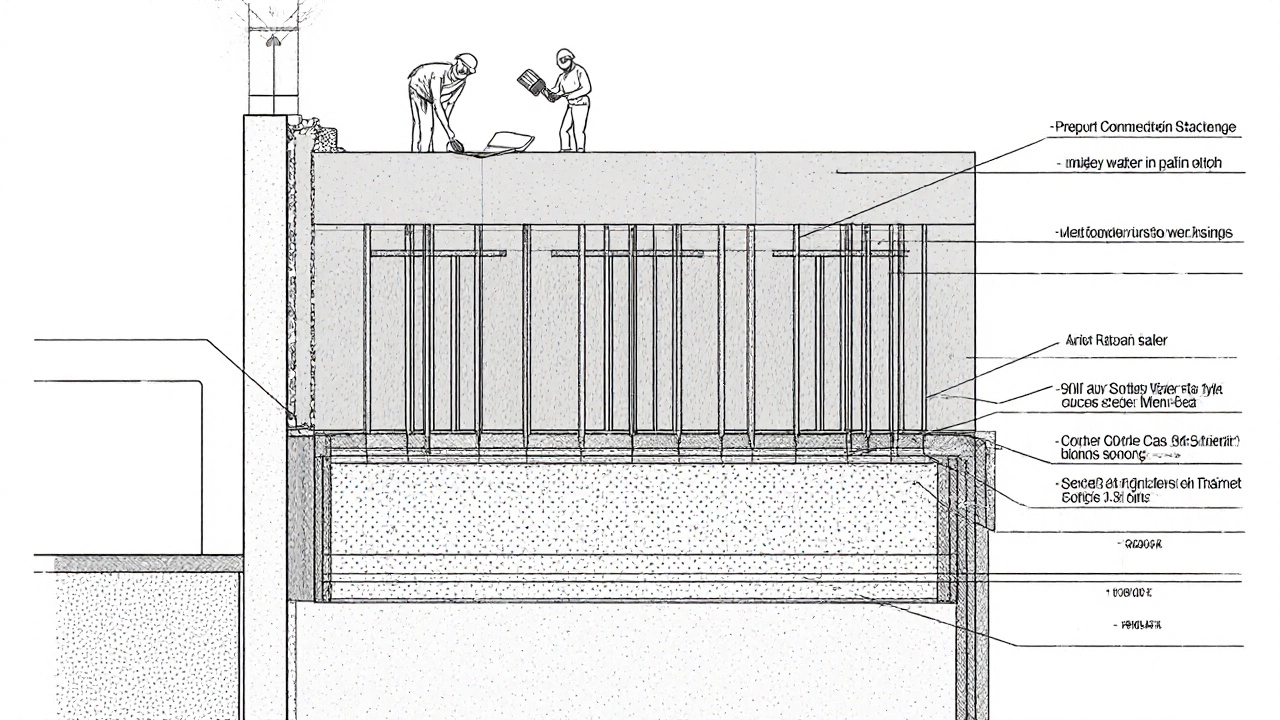
Comparison at a Glance
| Material | Typical Lifespan | Initial Cost (US$/sqft) | Maintenance Frequency | Best Climate | Environmental Impact |
|---|---|---|---|---|---|
| Stone (granite, basalt) | 150‑200years+ | ≈$30‑$45 | Every 20‑30years (cleaning, seal) | All, especially freeze‑thaw zones | Low embodied CO₂ (natural resource) |
| Reinforced Concrete | 100‑150years | ≈$8‑$12 | Every 15‑20years (re‑seal, crack repair) | Temperate, humid | Medium (cement production emissions) |
| Brick (clay) | 100‑150years | ≈$10‑$15 | Every 30‑50years (repoint mortar) | Dry to moderate humidity | Medium (firing energy) |
| Structural Steel | 50‑70years (protected) / indefinite | ≈$12‑$18 | Every 5‑10years (coat inspection) | Coastal, industrial (need corrosion guard) | High (energy‑intensive production) but recyclable |
| Engineered Wood (glulam) | 80‑120years | ≈$14‑$20 | Every 10‑15years (seal, inspect) | Temperate, low humidity | Low (renewable, carbon‑sequestering) |
Decision Criteria: Picking the Right Material for Your Situation
There’s no one‑size‑fits‑all answer. Below are the most common factors homeowners weigh when choosing a long‑lasting material.
- Climate resilience: In areas with harsh freeze‑thaw cycles, low‑porosity stone or well‑sealed concrete shines. Coastal regions demand corrosion‑resistant steel or concrete with extra waterproofing.
- Budget constraints: If upfront cost is a top concern, reinforced concrete offers durability at the lowest price per square foot. Stone may be reserved for accent walls or foundations where longevity justifies expense.
- Maintenance appetite: Some owners love occasional cleaning; others prefer “set‑and‑forget.” Stone and steel (with proper coating) demand the least ongoing work.
- Sustainability goals: Engineered wood scores high on carbon sequestration, while steel can be recycled indefinitely. Concrete’s carbon foot‑print is higher but can be offset with supplementary cementitious materials.
- Design flexibility: If you crave custom curves or large open spaces, steel frames or concrete allow more freedom than brick or stone.
Real‑World Examples of Longevity
Stone: The St.Nicholas Church in Halifax, built in 1855 from locally quarried granite, still serves a congregation today. Its walls show minimal wear thanks to low porosity and regular cleaning.
Reinforced Concrete: Many mid‑century homes in the Pacific Northwest use poured‑in‑place concrete foundations and walls. After 70years, owners report no structural cracks when a proper drainage system was installed.
Brick: The historic Waterfront Row blocks in Boston-built with fired clay brick in the 1890s-still house businesses and apartments, thanks to periodic mortar repointing.
Structural Steel: A modern “tiny house” community in Vancouver utilizes steel frames coated with zinc. After a decade, the frames show no corrosion despite salty sea air, proving that protective finishes work.
Engineered Wood: The Alpine Lodge in the Canadian Rockies uses glulam beams for its great‑room roof. With a robust vapor barrier and regular seal checks, the structure has thrived for 30years in a heavy‑snow environment.
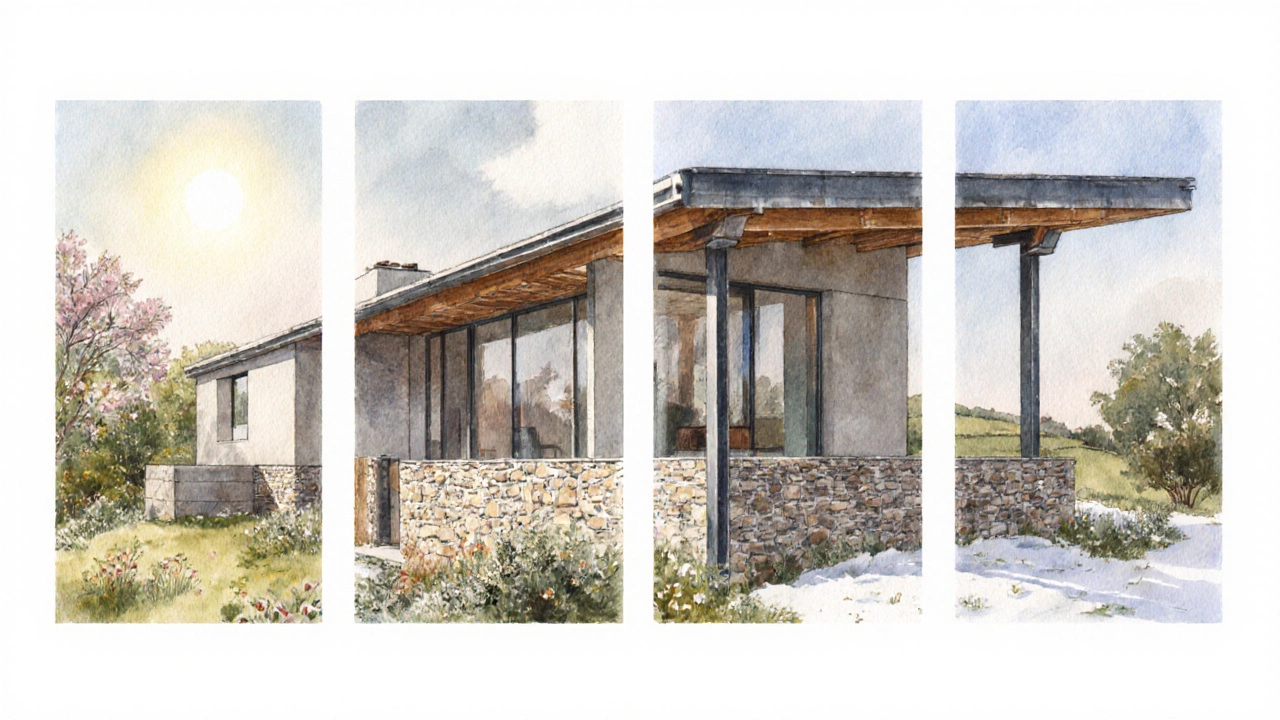
Pitfalls to Avoid and Maintenance Tips
- Ignore moisture barriers: Even the toughest stone will erode if water seeps behind it. Install proper flashing and drainage.
- Skip rebar coating: In concrete, uncoated rebar is the main cause of early spalling. Choose epoxy‑coated or stainless steel rebar in aggressive environments.
- Neglect mortar joints: Brick mortars shrink over time. Repointing with a lime‑based mix extends lifespan.
- Under‑inspect steel: Small rust spots can spread quickly. Conduct visual inspections every 2‑3years.
- Forget wood sealing: Engineered wood needs a protective seal within the first year and a re‑seal every decade.
By staying ahead of these issues, you’ll squeeze every extra decade out of your chosen material.
Next Steps for Homeowners
1. Assess your site’s climate - Look up local freeze‑thaw data, humidity, and salt exposure.
2. Set a budget window - Include both initial cost and projected maintenance over 30years.
3. Consult a structural engineer - They’ll run load calculations and recommend protective measures specific to your material.
4. Choose a reputable contractor - Quality workmanship matters as much as material choice.
5. Plan a maintenance schedule - Simple tasks like resealing stone or checking steel coatings can prevent costly repairs later.
Frequently Asked Questions
Which material truly lasts the longest?
When installed correctly and protected from moisture, natural stone (especially granite or basalt) can outlive any other residential material, often exceeding 200years. Reinforced concrete and protected steel follow closely if regular maintenance is performed.
Is concrete really that durable?
Yes. Modern concrete mixes with low water‑to‑cement ratios, fly ash, and proper curing can resist cracking for a century or more. The limiting factor is usually rebar corrosion, which can be mitigated with epoxy‑coated or stainless steel reinforcement.
Can I combine materials for better performance?
Absolutely. A common hybrid is a stone veneer over a reinforced‑concrete wall, giving you the aesthetic and surface durability of stone with the structural efficiency and lower cost of concrete.
What’s the most sustainable long‑lasting option?
Engineered wood (glulam) has a low carbon footprint because it stores CO₂ and comes from renewable forests. When paired with proper moisture barriers, its lifespan rivals that of brick, making it a strong sustainability choice.
How often should I inspect my steel frame?
A visual inspection every 2‑3years is advisable, focusing on welds, protective coatings, and any signs of rust. In coastal or high‑humidity zones, schedule annual checks.
